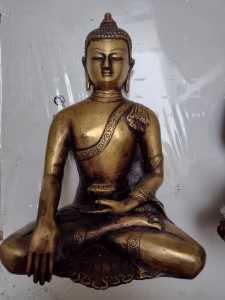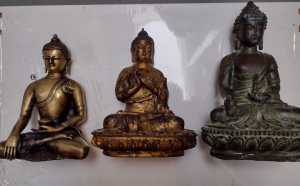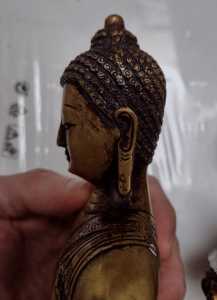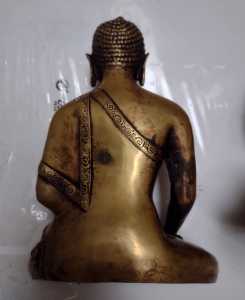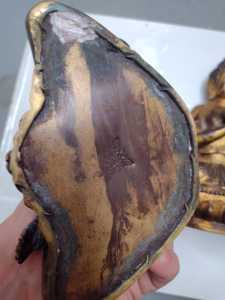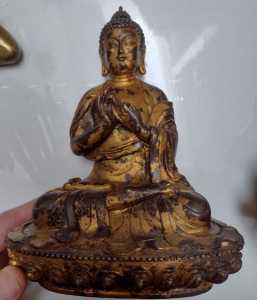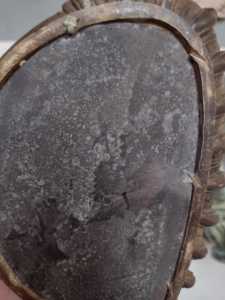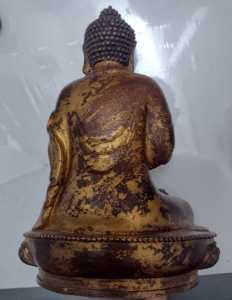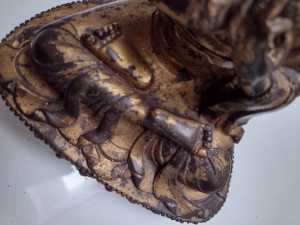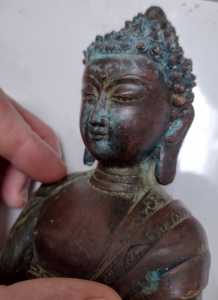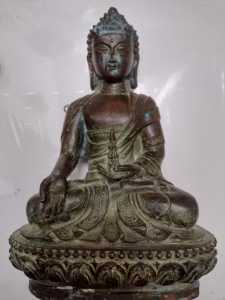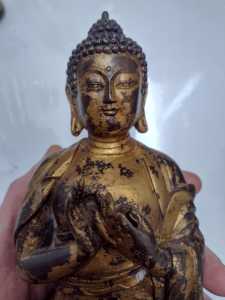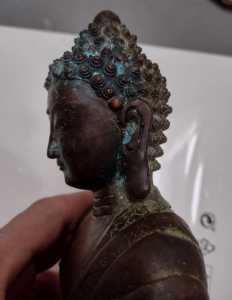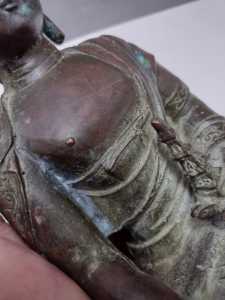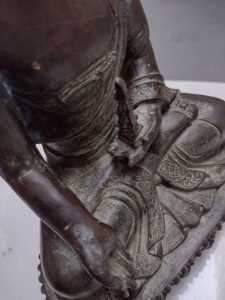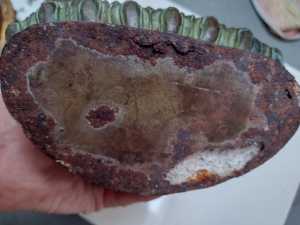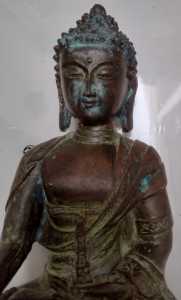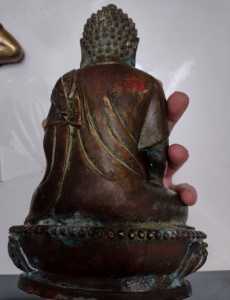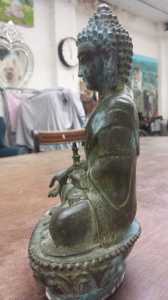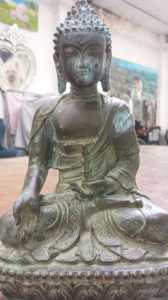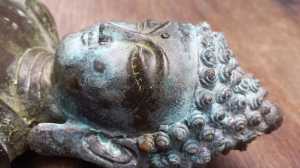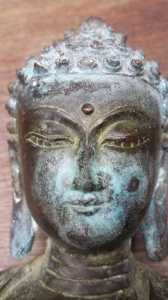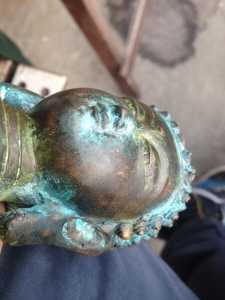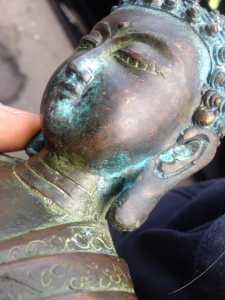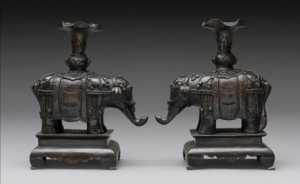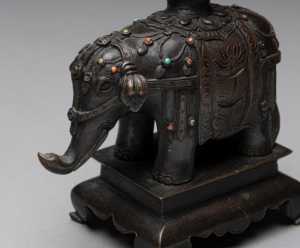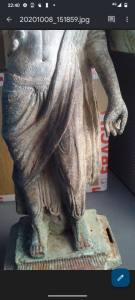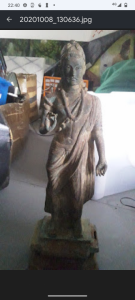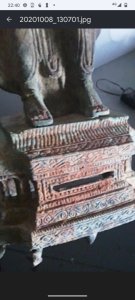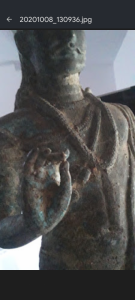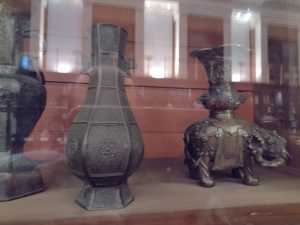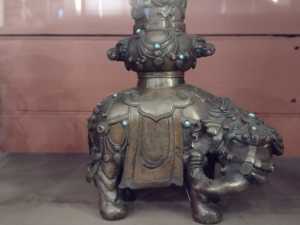The Chinese and Asian Art Forum. For Fans, Collectors and Dealers.
 Basic Rules For the BidAmount Asian Art Forum: Talk about whatever you want. You can even discuss and offer things that are for sale if they are authentic. Maximum image file size per post is 2 MB. Images of 700pxl x 700pxl are optimal if saved at a medium resolution. Be respectful of others and enjoy yourself. Click the YouTube link for a brief tutorial on using the forum. You can also EMBED Videos by cutting and pasting from You-Tube, Vimeo etc.
Basic Rules For the BidAmount Asian Art Forum: Talk about whatever you want. You can even discuss and offer things that are for sale if they are authentic. Maximum image file size per post is 2 MB. Images of 700pxl x 700pxl are optimal if saved at a medium resolution. Be respectful of others and enjoy yourself. Click the YouTube link for a brief tutorial on using the forum. You can also EMBED Videos by cutting and pasting from You-Tube, Vimeo etc.
NOTE: To post an item or add a new post, click open the category title from the FORUM LIST, and CLICK the Blue ADD TOPIC button.
I bought two of these recently. One of them was sold to me as 19th century the other is modern. The one I've had for a long time I think is late ming / 18th century. I'm wondering what you guys think. Hope you all had a good Christmas...
The first 2 are 20th century I can’t answer on the third one not sure.
@lotusblack Thanks Brian, The second was sold to me as 19th... The first is obviously modern, so no more guess work needed to know which one I think is pretty old.. possible late ming.
@lotusblack However the second one does seem to have some herbs or something inside it, as when you turn it you can hear the sound of something inside (not the sound of loose stone, but something light).
@thomasumjohnson the second could be late 19th I’m going by the base chisel pins I was told this is a 20th century thing. Older pieces are soldered.
The reason I think the 3rd one is pretty old is because when I got it, a few years ago, It was more covered with Patina. I decided to clean it up a bit (not knowing it would probably devalue it). I've attached pictures of before and after. Later I learned that The first corosion substance on old bronze is CUPRITE, an ox blood colour mineral.
On cuprite will grow the second form of corosion, Malachite, a green coluor crystal/mineral.
On malachite will grow the 3rd form of corosion, Azutite, the nice blue crystal/mineral.
To see if your piece is genuine, it is very simple & impossible to reproduce:
If you scratch the azurite, you must find some Malachite underneath.
And if you scratch that layer of malachite, you MUST find cuprite.
Azurite cannot grow on it's own, it needs malachite.
And Malachite needs the cuprite to grow on it.
There are no exception to that rule, if your piece is made of bronze.
I copied and pasted the above from Asian art forum... But you can see in the photos, the exact same pattern that was one the blue colour, in an oxblood / orange colour. So I presume this is an organic crystalline patina that takes many years to develop.
I don’t know enough about Bronze but I did own a Ming bronze and still own a Ming beast bronze. I did research and came to the conclusion that Ming bronze doesn’t break down in this manner. The alloy is different than other periods yes shows great patina but not this much corrosion. The alloy under the patina on my bronzes is gold to brass color. Not white. So it might also be pre Ming or later Ming it would need to be seen by someone with more experience but the patina itself looks good and natural.
@thomasumjohnson There could be some papers with prayers written on them sealed inside of it. For spiritual reasons I would recommend you keep it sealed and not disturb that. John
I have to let you know that all three are modern copies, including the third one
Not an expert but I think all are modern.
With bases closed is a strong indicator of 20th century.
Mark
@imperialfinegems Bonhams were of the opinion that the 3rd was 18th century, from the photos, not real life, the apraisal was over a year ago..
The 3rd is filled with clay or a hard material, which indicated to me it was not mass produced but a one off, from the casting technique. the original sculpture would have been covered with wax re-sculpted (in wax) leaving the casting core encased in bronze. I'm interested to know why you both think they are modern. I'm open to being wrong, here's a reference to the style..
the second image on the search result..
Hi Thomas,
As I wrote earlier I am not an expert nor a major collector of chinese bronzes.
At the moment I only have one pair of 17/18th century elephants.
My thoughts on your Bronzes were based on patina and the bases. The patina looks fabricated as does the green.
As you know these Buddha's are in mass production.
Perhaps if I may suggest in asking Peter for his opinion.
Mark
@imperialfinegems I think the green is bronze disease, not simulated patina. It can happen to anything made form Bronze. I don't believe the 3rd one, we are discussing is artificial. As I mentioned it has an organic patern of the ox blood red in the same pattern which the green areas have grown organically on top of, which can't be simulated artificially.
I have this other standing buddha, gandhara style, that has an artificial patina. It would have been induced with battery acid.
@imperialfinegems Congratulations! Very nice pair of 18th century bronze, most likely Qianlong period in my opinion. 16-17th century bronzes would be more dramatic and transformative (变形主义), somehow in parallel with the style in late Ming paintings, which was described by James Cahill
I'm in the British museum at the moment, and there is one of your elephants in the enlightenment section, I can't say that I'm convinced they are comparable, in terms of quality feel or the texture of the bronze
Thanks for visiting "The BidAmount Asian Art Forum | Chinese Art"
If you sell on eBay, or have a shop feel free to post images and descriptions and links.
Check back often for discussion about the latest news in the Chinese art and antique world. Also find out about the latest Asian art auctions at Sotheby's, Christie's, Bonhams and Tajans.
Auction results for: fine porcelain, ceramics, bronze, jade, textiles and scholar's objects. As well as Japanese, Thai, Vietnamese and other Asian cultures.
Thank you,
Peter Combs
Topics and categories on The BidAmount Asian Art Forum | Chinese Art
Kangxi vases, Kangxi dishes and chargers, Kangxi ritual pieces, Kangxi scholar's objects, Qianlong famille rose, Qianlong enamels, Qianlong period paintings, Qianlong Emporer's court, Fine porcelain of the Yongzheng period. Chinese imperial art, Ming porcelain including Jiajing, Wanli, Xuande, Chenghua as well as Ming jades and bronzes.
The BidAmount Asian Art Forum | Chinese Art
A free Asian art discussion board and Asian art message board for dealers and collectors of art and antiques from China, Japan, Korea, Thailand, Cambodia, Vietnam and the rest of Asia. Linked to all of the BidAmount Asian art reference areas, with videos from plcombs Asian Art and Bidamount on YouTube. Sign up also for the weekly BidAmount newsletter and catalogs of active eBay listing of Chinese porcelain, bronze, jades, robes, and paintings.
The art of calligraphy - and for the ancient Chinese it certainly was an art - aimed to demonstrate superior control and skill using brush and ink. Calligraphy established itself as one of the major Chinese art forms during the Han dynasty (206 BCE - 220 CE), and for two millennia after, all educated men were expected to be proficient at it.
The Museum’s collections of Asian art span nearly five millennia and encompass the cultures of China, the Himalayas, India, Japan, Korea, and Southeast Asia. In 2007, the Museum launched an initiative to create dedicated galleries for the collection, beginning with a gallery for the arts of Korea ...
Chinese art is full of symbolism, in that artists typically seek to depict some aspect of a totality of which they are intuitively aware.
China Online Museum is the finest online museum of Chinese art. It features Chinese calligraphy, painting, ceramics, bronzes, carving, and other artworks.
Chinese Ceramics & Works of Art. Overview Upcoming auctions Contacts Auction results ... Christie’s sales of Chinese ceramics and works of art showcase centuries of Chinese history. Held throughout the year in London, New York, Paris and Hong Kong, they attract a wide audience of collectors and connoisseurs vying for pieces as diverse as ...
Explore Asian Art Week. Contact the Specialist Department. Chinese Paintings ... Senior Specialist, Head of Sale. [email protected]. Tel:+1 212 641 5760. Bid in-person or online for the upcoming auction:Fine Chinese Paintings on 10 September 2019 at New York. Bid in-person or online for the upcoming auction:Fine Chinese Paintings on 10 ...
Discover an abundance of must-see art from all corners of a vast continent at Christie’s NY Asian Art Week. From contemporary classical and Chinese paintings to works with exemplary provenance from the Art Institute of Chicago, our Rockefeller Paza galleries will be full of ancient treasures and contemporary masterworks in a salute to the vibrant arts of Asia.
Sold to benefit The Art Institute of Chicago’s Asian Art Acquisition Fund, the sale features 84 lots with a focus on Ming and Qing porcelains, and offers a rare insight into the taste for collecting Chinese ceramics and works of art in the Midwest from the end of the 19th century through the 1980s. Highlights include two Wanli wucai garlic-head vases, a Qianlong mark and period, blue and ...
Specialist, Chinese Paintings, Christie's London Dr Malcolm McNeill is a Specialist in Chinese Paintings at Christie’s, based in London. He previously worked as an assistant curator of the Chinese collections and the Victoria and Albert Museum in London, as a researcher at the British Museum, and as a translator and tour guide at the National Palace Museum in Taipei.
The Christie's Education 2020 Conference: The Chinese Art Market 18 Jun 2019 Christie’s Education is delighted to announce our first international academic conference in Asia which will take place in Hong Kong from 26-27 November 2020 at the Hong Kong Convention and Exhibition Centre and will run in parallel with Christie’s Hong Kong Autumn Auctions.
The summer Chinese Art sale in Hong Kong will feature works of art from several private collections, including Qing porcelains and textile from the collection of the legendary Chinese art dealer A. W. Bahr (1877–1959), fine gilt bronze Buddhist sculptures from an old Hong Kong collection, an East Asian collection of Qing dynasty wine cups and jades, and a Japanese collection of Song ceramics ...
Sotheby's Chinese Works of Art Department holds two auctions each year in London, New York, Hong Kong and Paris.
Chinese Art - View Auction details, bid, buy and collect the various artworks at Sothebys Art Auction House.
With more than 340 Chinese works of art dating from the Neolithic to the Republic periods, highlights of this sale include a selection of Qing Imperial monochromes from the collection of Arnold and Blema Steinberg, early ceramics from the Art Institute of Chicago and Chinese porcelain and works of art from the collection of Henry Arnhold.
Results: Sotheby's Asia Week achieved $52.4 million in six strong auctions, exceeding pre-sale estimates. With 76.5% of lots sold and 60.3% of lots surpassing high estimates, the Asian art sales at Sotheby's indicate continued collector interest in the finest works of art from China, India and and the Himalayas.
Today's sale of Important Chinese Art will proceed as planned with sessions at 10 AM and 2 PM EDT. Sotheby's will be monitoring the weather conditions throughout the day and will be available to coordinate alternative bidding options should conditions make it difficult for clients to attend the auction in person.
Bonhams Chinese Art department is renowned for offering the finest works of art representing the richness and breadth of China's artistic heritage, particularly Imperial porcelain, white and spinach green jades, cloisonné and Buddhist art. Specialised international auctions are held globally, including London, Hong Kong and San Francisco.
Bonhams : Chinese Works of Art We use cookies to remember choices you make on functionality and personal features to enhance your experience to our site. By continuing to use our site you consent to the use of cookies. Please refer to our privacy and cookie policies for more information.
Bonhams Fine Art Auctioneers & Valuers: auctioneers of art, pictures, collectables and motor cars. We use cookies to remember choices you make on functionality and personal features to enhance your experience to our site. By continuing to use our site you consent to the use of cookies. ... Chinese Art (US) General enquiries
Bonhams : Fine Chinese Art We use cookies to remember choices you make on functionality and personal features to enhance your experience to our site. By continuing to use our site you consent to the use of cookies. Please refer to our privacy and cookie policies for more information.
Bonhams Fine Art Auctioneers & Valuers: auctioneers of art, pictures, collectables and motor cars Bonhams : Asian Art We use cookies to remember choices you make on functionality and personal features to enhance your experience to our site.
Bonhams are international auctioneers of fine Chinese and Japanese art. We specialise in rare Imperial and Export Chinese ceramics and works of art, as well as Japanese ceramics, fine and decorative works of art from the Neolithic Period to the 20th century. View on map
Bonhams Fine Art Auctioneers & Valuers: auctioneers of art, pictures, collectables and motor cars. We use cookies to remember choices you make on functionality and personal features to enhance your experience to our site. By continuing to use our site you consent to the use of cookies. ... Asian Art Bonhams. Work. 22 Queen St.
